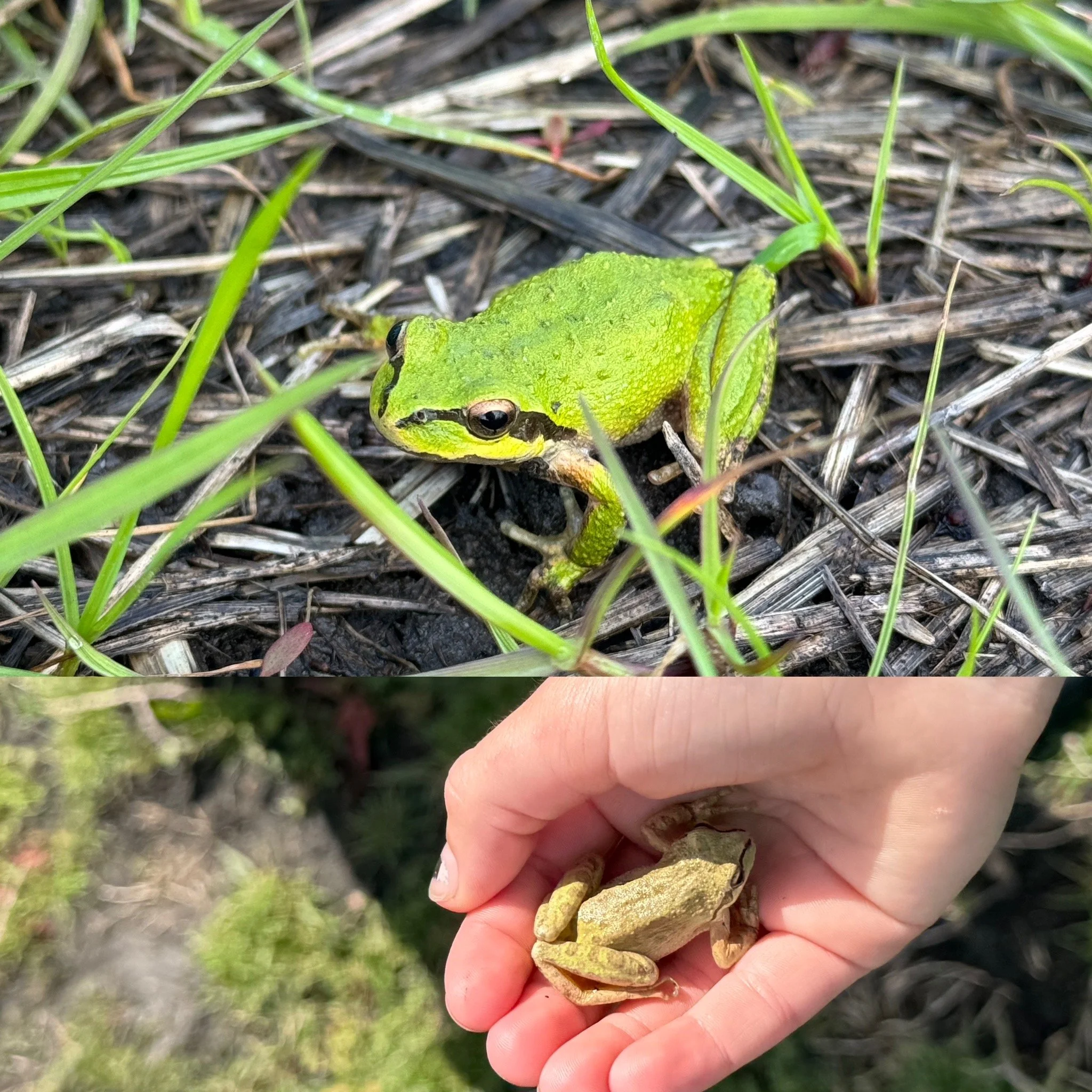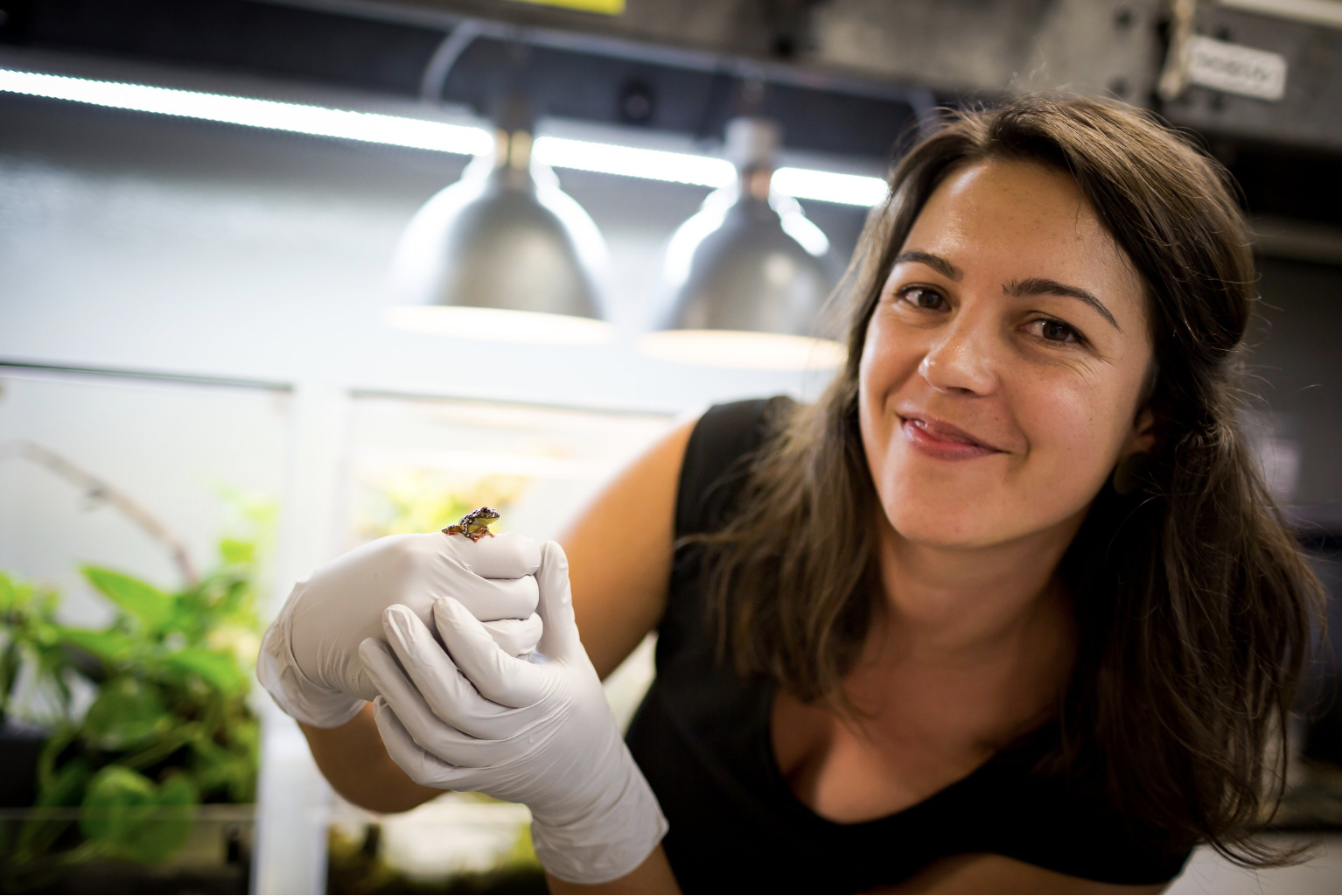Photos both taken last Saturday, 4/23. Top photo taken out at Wavecrest Open Space during our work day. Bottom photo taken of a frog hidden amongst the rushes surrounding a pond in Pescadero.
**Nature Nugget**
Spring here on the coastside can be a noisy season- full of chirps, and buzzing and frog calls. Many of you Coastside residents have become very familiar with the sound of the Pacific tree frog (Pseudacris regilla). These frogs are also known as Pacific chorus frogs, and they live up to this name, as anyone who has been near a breeding pond can attest to. Their sounds are shared amongst themselves as a “language” that organizes breeding, each adapted to particular functions in attraction and rivalry.
These little frogs are unmistakable, with a conspicuous dark "mask" or eye stripe extending from the nostrils through the eye as far as the shoulder. They are small frogs, at approximately 5 centimeters in length, and have a rounded toe pad at the end of each digit. Females are slightly larger than males, a feature common with many frogs. The presence of a vocal sack on the male throats can also help to identify the gender.
The coloration of these frogs includes shades of green, tan, grey, brown, reddish, or black - and can change colors over periods of weeks or even hours due to specialized skin cells in their skin that expand or contract, causing the skin to appear lighter or darker. Environmental factors such as light, temperature, and humidity can also influence this skin coloration. This adaptation helps frogs camoflauge themselves with their surroundings.
The Pacific Tree Frog ranges from British Columbia to Baja, Mexico, and eastward to Montana and Nevada. They are the west coast’s most prevalent and adaptable frog species. More resistant to pollution and habitat modification than others, they will breed in almost any kind of fresh water, including seasonal puddles. These frogs eat a wide variety of arthropods, including spiders, flies, beetles, ants and other insects, and they can expand their bodies to eat prey that is almost as large as they are.
To learn more about the amphibians and reptiles of our coast check out this recent CLT community webinar:
AMPHIBIANS AND REPTILES OF THE COAST
Presented by: Dr. Rayna Bell


